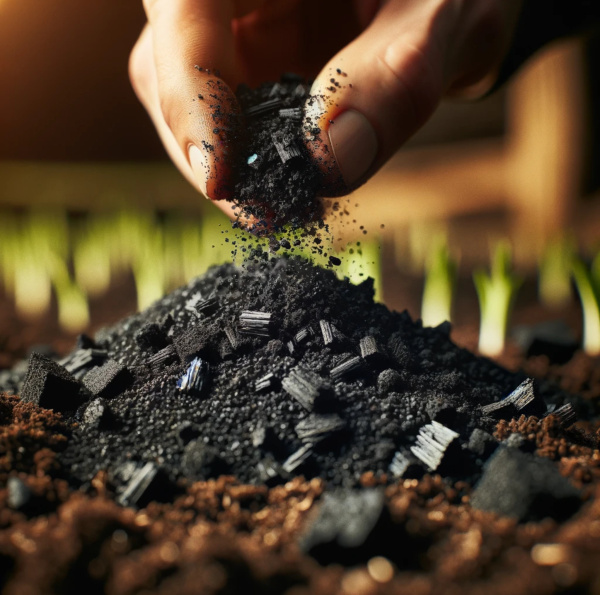
Introduction to Biochar
Environmental and Gardening Benefits
In the quest for sustainable gardening and agricultural practices, one ancient solution has been making a remarkable modern comeback: Biochar. This substance, revered by ancient Amazonian cultures for its soil-enhancing properties, is now recognized for its potential to address contemporary environmental and agricultural challenges. This introduction to Biochar will explore its origins, benefits, and practical applications in gardening, providing a comprehensive overview for those interested in its multifaceted contributions to environmental health and horticulture.
What is Biochar?
Biochar is a carbon-rich product made from organic matter through a process called pyrolysis, which involves heating the material in a low-oxygen environment. The result is a lightweight, black residue that retains the original structure of the material but is packed with carbon. This structure is incredibly porous, making Biochar an excellent soil amendment that can last hundreds to thousands of years.
The surface area of biochar is also truly remarkable due to its porosity. Just one gram of biochar can have a surface area of up to 2,500 square meters (26,910 square feet), which is roughly equivalent to half the size of a U.S. football field. This extensive surface area makes biochar an excellent soil amendment, as it can help retain water and nutrients, support soil microbiology, and improve soil health overall. It’s a fascinating material with great potential for enhancing garden and agricultural soils. Some have dubbed biochar as the microorganism metropolis of the soil.
The Science Behind Biochar: How It Improves Soil Health
Amidst the growing search for sustainable agricultural practices, Biochar has emerged as a beacon of hope. This ancient material, once used by the Indigenous peoples of the Amazon to enrich their unforgiving soils, is today hailed for its remarkable ability to enhance soil health. But what is the science underpinning these benefits?
This article delves into the mechanisms through which Biochar works its magic on the soil, promising not just improved plant growth but also a stride towards environmental sustainability.
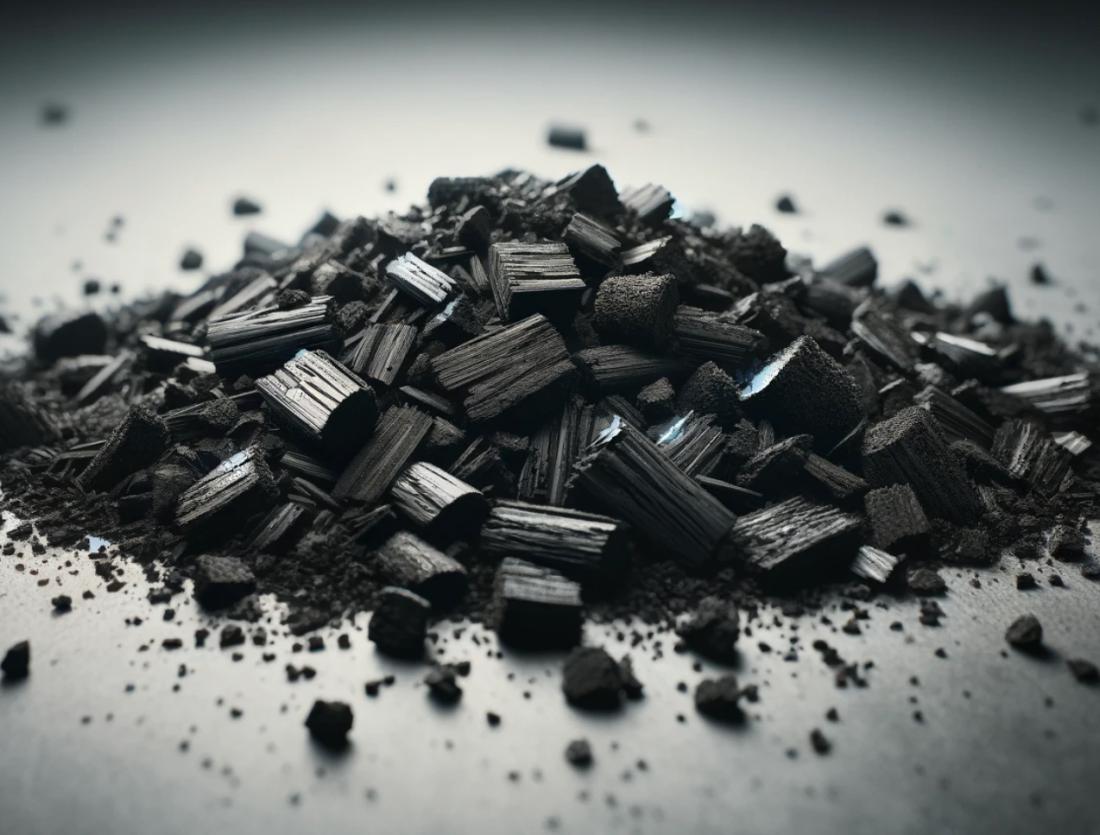
Environmental Benefits of Biochar
- Carbon Sequestration: One of the most significant environmental benefits of Biochar is its ability to lock away carbon in a stable form, preventing it from contributing to atmospheric CO2 levels. This characteristic positions Biochar as a valuable tool in the fight against climate change, offering a sustainable method of carbon storage.
- Waste Reduction: Biochar production utilizes residues from agricultural and forestry operations, converting waste materials into a valuable resource. This not only reduces the need for waste disposal but also minimizes greenhouse gas emissions associated with decomposition or burning.
- Biodiversity: Although research is ongoing, there is evidence to suggest that Biochar can enhance soil biodiversity by providing a habitat for beneficial microorganisms. These organisms play a crucial role in nutrient cycling and plant health. The remarkable surface area and porosity of biochar provide microorganisms their own 'city' to populate.
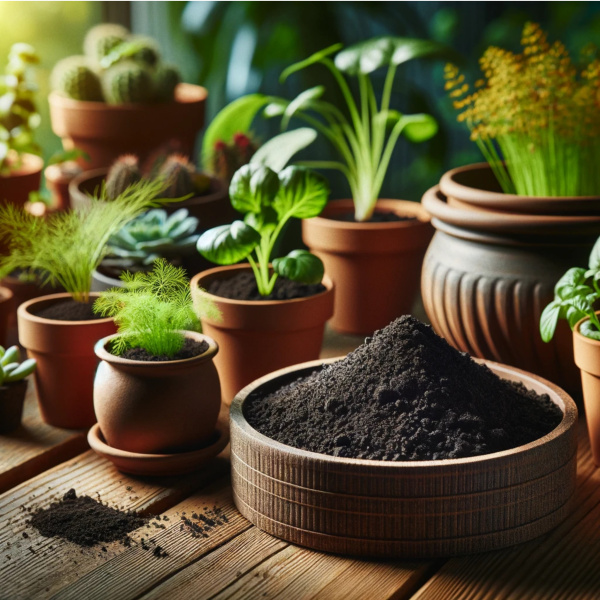
Gardening Benefits of Biochar
- Soil Health: By improving soil structure, Biochar enhances aeration, water retention, and nutrient availability. Its porous nature allows it to retain moisture and nutrients, making them more accessible to plants. This can lead to healthier, more resilient gardens with less need for chemical fertilizers.
- Plant Growth: The enhanced soil conditions fostered by Biochar can improve plant growth and yield. Studies have shown that Biochar-enriched soils support stronger root development and healthier plants, likely due to improved nutrient and water availability.
- Water Conservation: For gardens in arid or drought-prone areas, Biochar can be a game-changer. Its ability to hold water reduces the need for frequent watering, conserving water resources and saving time and energy for gardeners.
How to Use Biochar in Gardening
- Application Methods: Biochar can be mixed directly into the soil at the time of planting or added to compost to enrich it. A general recommendation is to use a few kilograms of Biochar per square meter of soil, though this can vary based on soil type and the plants being grown. Make sure you also 'activate' the biochar prior to use; see our charging/inoculation section below for additional details.
- Compatibility: Biochar is versatile and can be used with a wide range of plants, including vegetables, flowers, and trees. It’s particularly beneficial in poor soils, where it can make a significant difference in plant health and productivity.
- Long-Term Use: One of the most appealing aspects of Biochar is its durability. Unlike other organic soil amendments that decompose, Biochar remains in the soil for centuries, continuously improving soil health and carbon sequestration.
Understanding Biochar
As noted, biochar is essentially organic matter, such as wood, manure, or leaves, transformed into a carbon-rich, stable form through pyrolysis—a process of decomposition at high temperatures in the absence of oxygen. This transformation endows Biochar with unique properties like a vast surface area, significant porosity, and a rich carbon content, making it an ideal candidate for soil amendment.
How Biochar Enhances Soil Structure
The physical structure of soil is crucial for plant health, affecting everything from root development to water drainage. Biochar, with its porous nature, improves soil structure by increasing soil porosity and reducing density. This enhancement in soil structure leads to better aeration and water retention capabilities, providing plants with a more hospitable environment for growth.
Biochar’s Role in Nutrient Retention in Soil
One of the most significant ways Biochar improves soil health is by increasing nutrient retention. The large surface area and porosity of Biochar provide ample sites for nutrient adsorption, reducing the leaching of essential nutrients and thus making them more available to plants. Additionally, Biochar can improve the soil’s cation exchange capacity (CEC), further enhancing its ability to hold onto important nutrients.
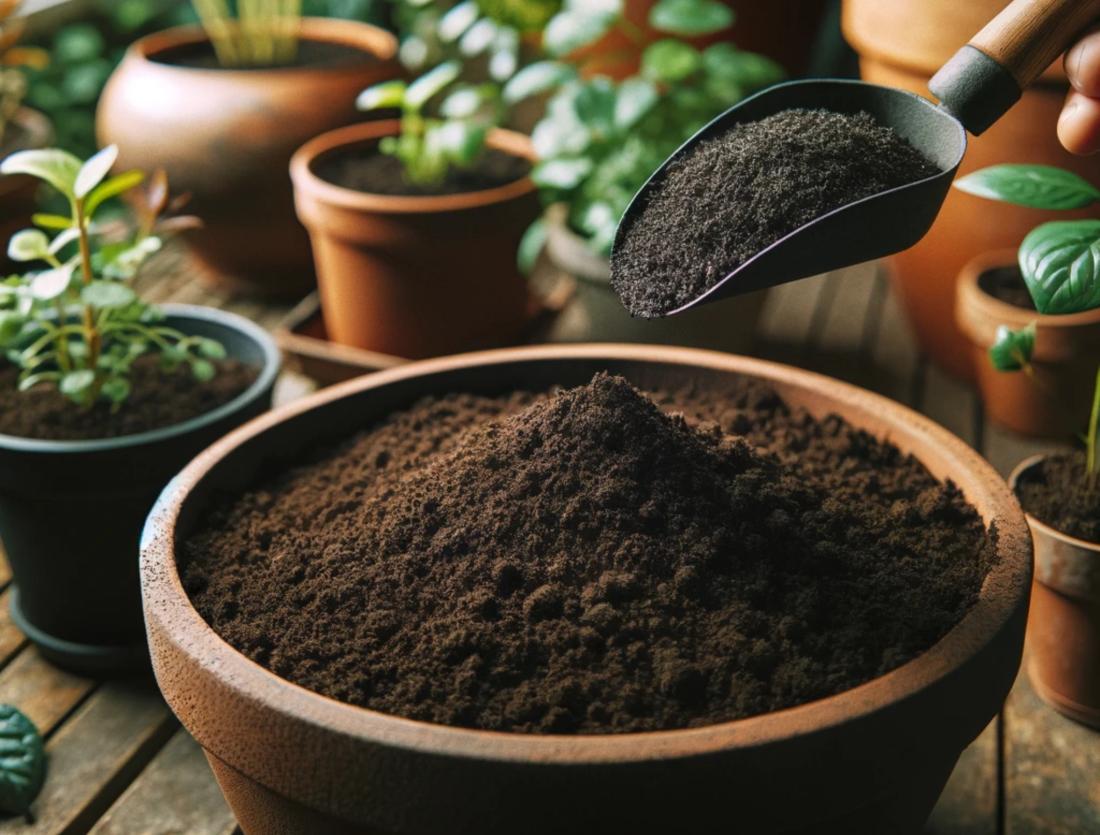
Biochar and Microbial Life in Soil
The benefits of Biochar extend into the microscopic world of soil microbiomes. By creating a conducive environment for beneficial microorganisms and fungi, Biochar supports a vibrant soil ecosystem. This boost in microbial life not only aids in nutrient cycling but also promotes healthier plant roots, enhancing overall plant growth and resilience against diseases.
Biochar’s Effect on Soil pH and Contaminant Binding
Soil pH is a critical factor affecting plant health, and Biochar can help moderate soil pH levels, making soils more hospitable for a wider range of plant species. Furthermore, Biochar’s structure allows it to bind contaminants, such as heavy metals, reducing their bioavailability and mitigating their harmful impacts on plant growth and human health.
Practical Considerations and Application Rates
While the benefits of Biochar are clear, its application must be done thoughtfully. The amount of Biochar needed can vary depending on soil type and the specific needs of the plants being grown. Generally, a few kilograms per square meter of soil is a good starting point, but gardeners and farmers should adjust based on their observations and soil testing results.
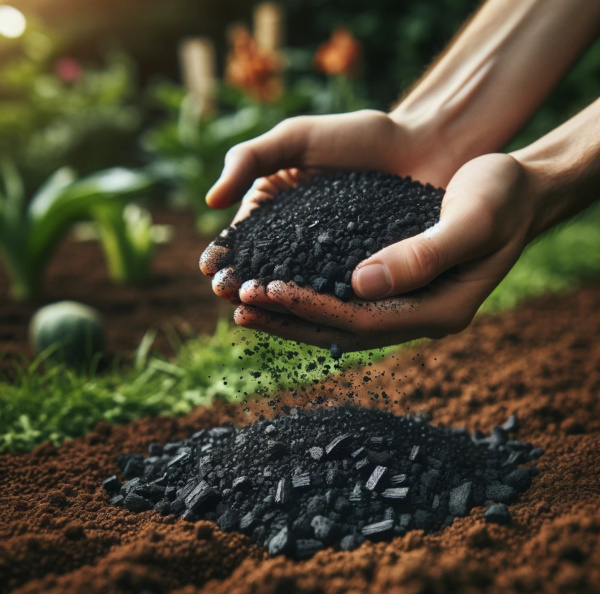
Long-term Benefits and Sustainability
The allure of Biochar lies not only in its immediate benefits for soil health but also in its long-term sustainability. Once added to soil, Biochar remains stable for centuries, continually improving soil structure and nutrient retention while also sequestering carbon, contributing to the fight against climate change.
Challenges and Considerations
Despite its many benefits, Biochar’s application is not without challenges. The properties of Biochar can vary widely depending on the feedstock and pyrolysis conditions, making standardization and predictability a concern. Additionally, not all soils or crops may respond positively to Biochar, necessitating careful consideration and experimentation.
While Biochar is a promising addition to sustainable gardening practices, it’s essential to source it responsibly to ensure environmental benefits. Gardeners interested in making their own Biochar should research safe and efficient production methods to avoid harmful emissions.
Charging and Inoculating Biochar: Enhancing Its Benefits for Soil and Plants
While Biochar itself is a potent soil amendment, its effectiveness can be significantly enhanced through processes known as charging and inoculation. These steps ensure that Biochar does not only improve soil structure and nutrient retention but also becomes a thriving habitat for beneficial soil microbes from the get-go. Here, we explore the reasons behind charging and inoculating Biochar, along with best practices for these processes.
Why Charge and Inoculate Biochar?
Immediate Nutrient Boost: Freshly made Biochar is extremely porous and can initially absorb nutrients from the soil, temporarily making them less available to plants. Charging Biochar with nutrients ensures it provides an immediate benefit to soil and plants upon application.
Microbial Colonization: Inoculating Biochar with beneficial microbes jump-starts the process of establishing a healthy soil microbiome. This is crucial because these microorganisms play a key role in nutrient cycling, enhancing plant growth, and increasing resistance to diseases.
How to Best Charge Biochar
Charging Biochar involves saturating it with nutrients before it is added to the soil. There are several effective methods for charging:
Compost Tea: Soaking Biochar in compost tea enriches it with a wide range of nutrients and beneficial microbes. Simply submerge Biochar in compost tea and let it sit for a few days to a week before application.
Nutrient Solutions: Mixing Biochar with a nutrient-rich solution, such as liquid fish emulsion or seaweed extract, can also charge it effectively. The solution should fully saturate the Biochar, which can then be left to absorb the nutrients for several days.
Mixing with Compost: Another method is to mix Biochar directly with compost. The compost not only charges the Biochar with nutrients but also introduces a diversity of microbial life. A few weeks in a compost pile allows for thorough integration.
How to Inoculate Biochar
Inoculation specifically targets the microbial aspect, introducing beneficial bacteria and fungi directly into the Biochar. This can be done in conjunction with charging or as a separate step:
Microbial Inoculants: Commercially available microbial inoculants, designed for garden and agricultural use, can be mixed with Biochar. Following the product instructions, mix the inoculant with water and soak the Biochar to ensure it's fully colonized by the microbes.
Homemade Microbial Brews: For a more DIY approach, homemade microbial brews, such as fermented plant extracts or bokashi bran, can be used. These natural preparations offer a diverse microbial community to enrich the Biochar.
Integration with Worm Castings: Incorporating Biochar into worm bins or mixing it with fresh worm castings is another effective inoculation method. The vermicompost not only charges the Biochar but also introduces beneficial microbes from the worm gut, enhancing the microbial diversity.
Best Practices for Charging and Inoculating Biochar
Adequate Soaking Time: Ensure Biochar is soaked for sufficient time to fully absorb the nutrients and microbial inoculants. A week is typically adequate, but some gardeners prefer longer periods for enhanced saturation.
Proper Mixing: Thoroughly mix Biochar with compost, worm castings, or other materials to ensure even nutrient and microbial distribution.
Application Rate Consideration: When applying charged and inoculated Biochar to the garden, consider the application rate. Too much Biochar, even when fully charged, can alter soil dynamics. Start with a modest amount and observe plant response.
Charging and inoculating Biochar are critical steps in maximizing its benefits for soil health and plant growth. By ensuring that Biochar is nutrient-rich and teeming with beneficial microbes upon application, gardeners and farmers can enhance their soils more effectively and sustainably. These practices not only leverage the structural benefits of Biochar but also its potential as a living, breathing component of the soil ecosystem, fostering a vibrant, healthy garden or farm.
Biochar Conclusion
Biochar offers a bridge between ancient wisdom and modern environmental challenges, providing a sustainable solution to soil health, plant vitality, and carbon sequestration. By incorporating Biochar into gardening practices, individuals can contribute to a healthier planet while enjoying the tangible benefits of lush, productive gardens. As we continue to explore and refine the use of Biochar, its role in sustainable agriculture and environmental stewardship is likely to grow, marking a return to natural, effective solutions for a greener future.


